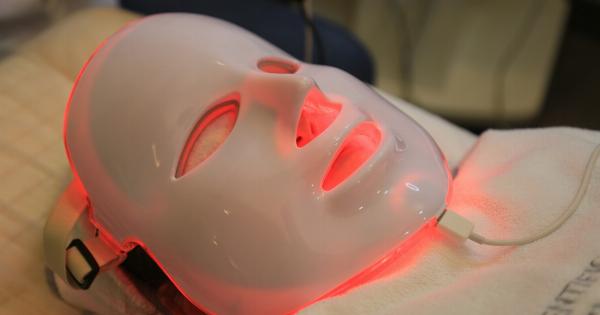As we age, one of the most prominent signs of maturing skin is the appearance of sagging and wrinkles on our neck. Many individuals find this issue bothersome, as it can make them appear older and less youthful.
To combat these concerns, various cosmetic procedures have emerged, including the necklift. However, before deciding whether a necklift is the right solution for you, it is essential to weigh the pros and cons. In this article, we will delve into the factors that can help you make an informed decision about undergoing a necklift.
What is a Necklift?
A necklift, also known as a lower rhytidectomy, is a cosmetic surgical procedure aimed at improving the appearance of the neck and jawline.
During the necklift procedure, excess skin and fat are removed, and the underlying tissues and muscles are tightened to create a more youthful and firm neck contour.
The Aging Neck
As we age, the skin on our neck loses elasticity due to a decline in collagen and elastin production.
Additionally, factors such as gravity, sun exposure, genetics, and lifestyle choices can contribute to the development of sagging skin, jowls, and the formation of horizontal bands on the neck.
When to Consider a Necklift
While each individual has unique aesthetic concerns, there are several common reasons why someone may consider getting a necklift:.
1. Sagging Skin and Jowls
If you notice significant sagging skin and jowls along the jawline and neck, despite a healthy lifestyle and skincare regimen, a necklift may provide the desired solution.
2. Visible Neck Bands
Horizontal bands that manifest as we age can create an undesirable appearance. A necklift can help smooth out these bands, resulting in a more youthful appearance.
3. Excess Neck Fat
If you have excess fat or a “double chin” appearance that does not respond to diet and exercise, a necklift can address this concern by removing the fat and tightening the underlying muscles.
The Necklift Procedure
Before undergoing a necklift, it is crucial to consult with a board-certified plastic surgeon who can evaluate your specific needs and goals.
During the consultation, the surgeon will explain the procedure in detail and assess your overall health to ensure you are a suitable candidate.
The necklift procedure typically involves the following steps:.
1. Anesthesia
Before the surgery begins, you will be given anesthesia to keep you comfortable throughout the procedure. This may involve local anesthesia with sedation or general anesthesia, depending on your surgeon’s recommendation.
2. Incisions
Once you are under anesthesia, the surgeon will make incisions in inconspicuous locations, such as behind the ears and under the chin. These incisions allow the surgeon to access the underlying tissues and perform the necessary adjustments.
3. Tissue and Muscle Tightening
The surgeon will then tighten the underlying neck muscles and tissues to create a more youthful neck contour. This step helps address the concerns of sagging skin and visible bands.
4. Excess Fat and Skin Removal
If there is excess fat or sagging skin present, they will be removed at this stage of the procedure. The surgeon will carefully sculpt the neck area to provide a smoother and more defined appearance.
5. Incision Closure
After the necessary adjustments have been made, the surgeon will close the incisions using sutures or surgical adhesive. These incisions are strategically placed to minimize visible scarring.
Recovery and Results
After the necklift procedure, it is normal to experience some swelling, bruising, and discomfort. Your surgeon will provide detailed post-operative instructions to help manage these symptoms and ensure a smooth recovery.
It typically takes several weeks for the swelling to subside and the full results of the necklift to become apparent.
However, once the initial recovery period is over, you can enjoy a more youthful and rejuvenated neck contour that can last for many years.
Alternative Non-Surgical Options
While a necklift is an effective surgical solution for neck rejuvenation, some individuals may prefer non-surgical alternatives due to various reasons such as cost, recovery time, or personal preferences.
Here are a few non-surgical options to consider:.
1. Ultherapy
Ultherapy is a non-invasive treatment that uses ultrasound technology to stimulate collagen production in the deeper layers of the skin. This treatment can provide a mild lift to the neck and improve the appearance of sagging skin.
2. Botox
Botox injections can be used to relax the muscles that contribute to the appearance of neck bands. This treatment is temporary and requires regular maintenance to sustain the desired results.
3. Dermal Fillers
Dermal fillers, such as hyaluronic acid-based fillers, can be used to add volume and improve the appearance of wrinkles on the neck. This non-surgical option offers immediate results but requires ongoing treatments for long-term maintenance.
Conclusion – Making the Decision
Deciding whether or not to undergo a necklift is a personal choice that depends on your specific concerns, budget, and desired outcome.
It is crucial to consult with a qualified plastic surgeon who can assess your unique needs and provide guidance tailored to your situation.
If sagging skin, jowls, or excess fat on your neck are causing you distress and affecting your self-confidence, a necklift may be the solution you are looking for. Alternatively, non-surgical options can provide temporary relief with minimal downtime.
Ultimately, the decision to undergo a necklift should be well-informed, taking into account your expectations, potential risks, and the expertise of your chosen surgeon.
With careful consideration and guidance, you can achieve a smoother, more youthful neck contour that enhances your overall appearance.






























